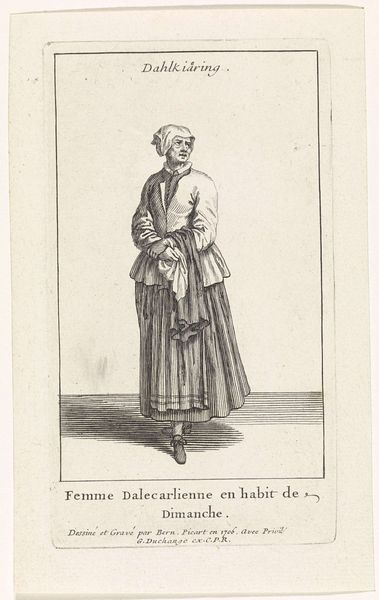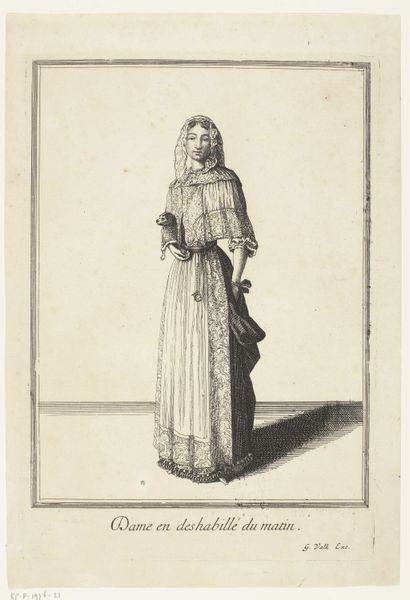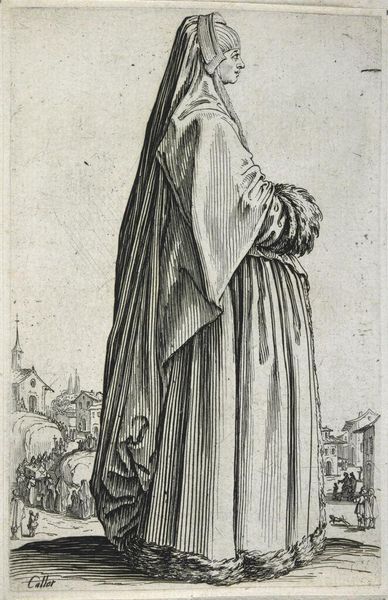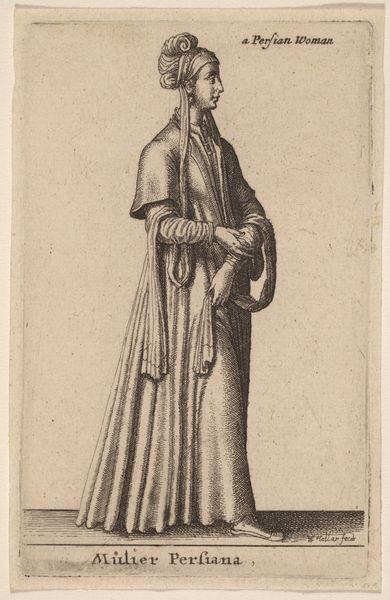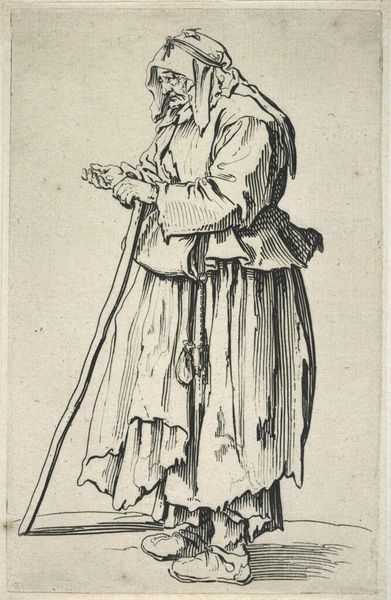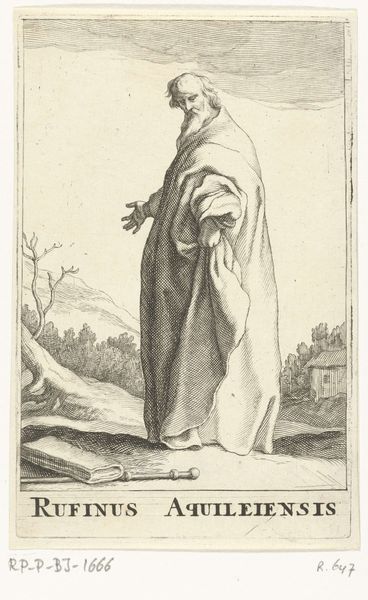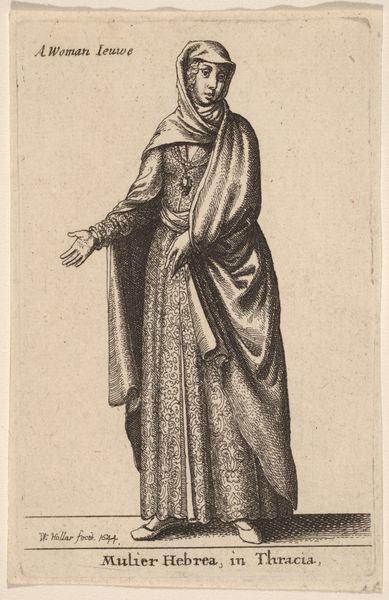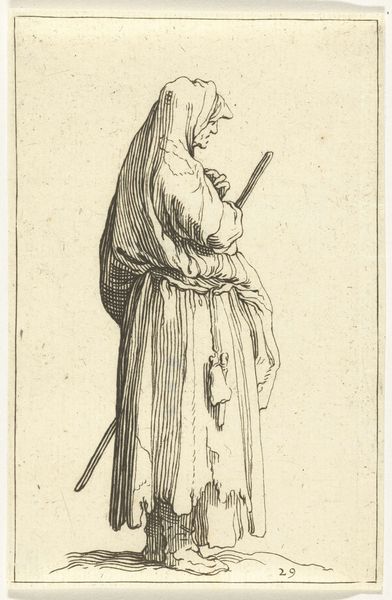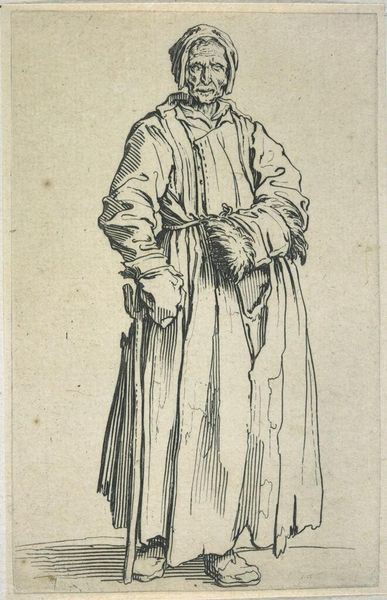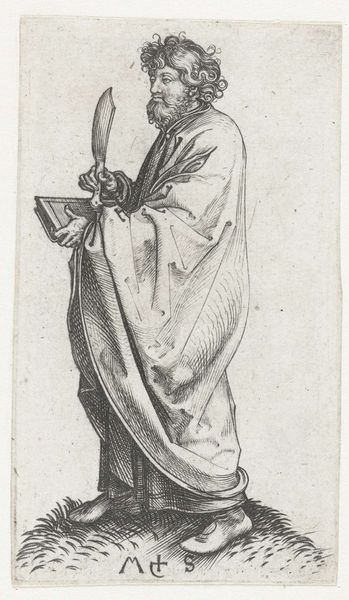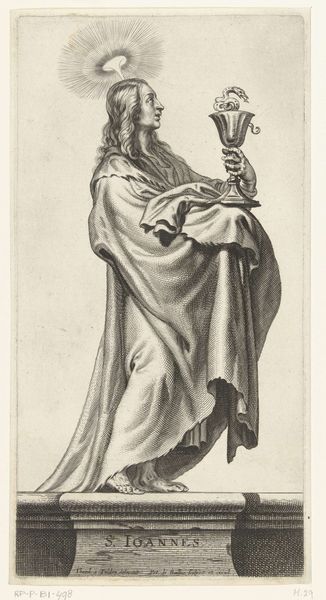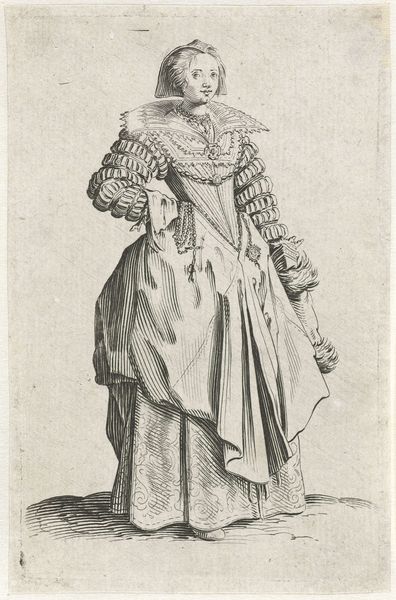
print, engraving
#
portrait
#
baroque
# print
#
old engraving style
#
figuration
#
genre-painting
#
engraving
Dimensions: height 120 mm, width 69 mm
Copyright: Rijks Museum: Open Domain
Curator: Up next, we have "Dame in eigentijdse kleding, waaier in de hand", which translates to "Lady in Contemporary Clothing, Fan in Hand". It’s an engraving by Bernard Picart, dating back to 1696. You can find it here at the Rijksmuseum. Editor: My initial reaction? It feels a little stiff, wouldn’t you say? There's an awkward formality to the pose, though the hatching gives the dress a nice weight. Curator: That stiffness reflects a societal ideal of the time, especially within the Baroque period. Etiquette and presentation were paramount. These genre paintings captured societal expectations and the everyday lives of various classes, reflecting status. Editor: I see that, the textures and shading in her gown—it's masterful! What's especially interesting is how the artist manages to suggest volume with such limited tonal range in printmaking. Curator: Absolutely, and the "privilege du roi" inscription indicates royal patronage and the socio-political influence of art production during this time. Engravings like these circulated widely, disseminating ideas and fashion trends of the French court. Editor: Fashion trends that clearly prioritize an elevated status. The folds in the dress create an impressive sense of space—even though the surrounding composition is minimal. Did the artist aim to achieve a sense of theatrical opulence even through a seemingly ordinary scene? Curator: Possibly, yes! What appears to be an everyday depiction carries a weight of societal expectation, especially for women. Notice how her gaze is slightly averted, suggestive of modesty and obedience. The engraving captures both an individual and an emblem of the era’s complex social codes. Editor: A clever combination of form and context... I see so much emphasis on art’s aesthetic aspects sometimes I overlook the historical conditions that birthed it. This engraving, I can see it captures not just an image, but an epoch, defined by its socio-cultural values. Curator: Precisely, and by looking closer, the aesthetic elements such as the lines that make the drawing speak volumes to a historian like myself. A constant reminder of art's complex role in society!
Comments
No comments
Be the first to comment and join the conversation on the ultimate creative platform.
